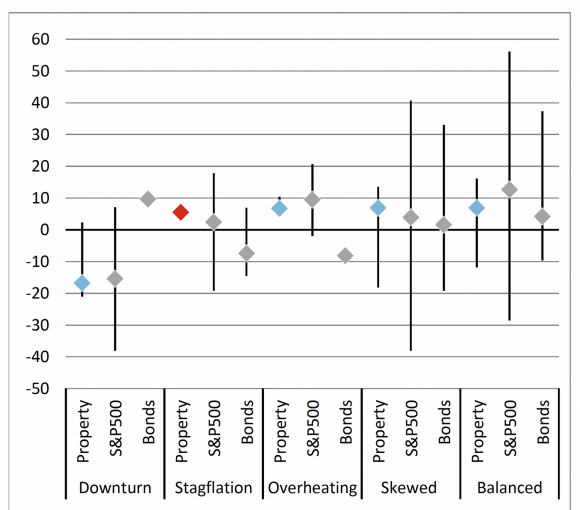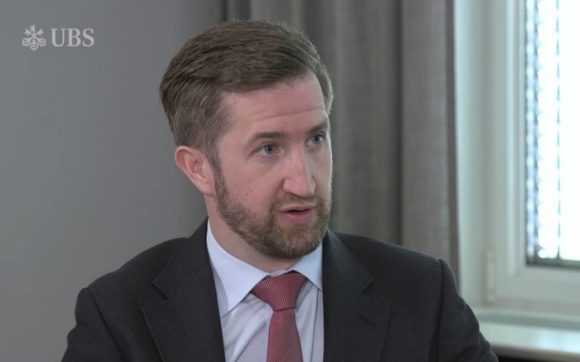2Q 2022 Quarterly Investment Forum
Preparing portfolios for persistently elevated inflation
This webpage may contains product that does not match the risk profile for retail investor. To proceed, please confirm that you are a professional / institutional client and investor as defined under article 4 of Financial Consumer Protection Law and article 11 of SITE&SICE Act.
Preparing portfolios for persistently elevated inflation
Preparing portfolios for persistently elevated inflation
Amid sharp tightening, market pricing of recession risk seems likely to increase. We expect macro uncertainty to stay elevated with high rates volatility and are staying cautious on risk until central banks turn dovish or growth inflects higher. Alternatives, including real estate, infrastructure and private credit have proven to be useful hedges in inflationary regimes.
What is QIF?
What is QIF?
The Quarterly Investment Forum (QIF) is an ongoing cross-investment team discussion and debate about the most relevant active risks in major markets and across asset classes and funds.
Each QIF is a mix of 'top down' and 'bottom up' perspectives, beginning with a 'top down' discussion of the major macroeconomic themes identified by the Asset Allocation Team. Each quarter, a rotating roster of portfolio managers present a 'bottom up' view of major active risks in their portfolios.
We have a unique depth and breadth of investment expertise across traditional and alternative asset classes in all regions globally. The QIF leverages that expertise through regular, structured communication between investment teams. The ultimate goal is to improve client outcomes.
2Q 2022 Quarterly Investment Forum highlights
2Q 2022 Quarterly Investment Forum highlights
Macro and Asset Allocation
Evan Brown, portfolio manager and head of multi-asset strategy
The peak in inflation has proved elusive due to surging energy prices, all while core inflation remains persistently elevated. These price pressures are a global problem, and markets are anticipating that central banks are going to have to tighten a lot to credibly bring down inflation. But what is not priced in is a significant decline in growth due to this tightening and negative supply shocks on the commodity side. That is why we think we’re in the process of moving towards a growth scare in markets if not a recession, and are underweight stocks and overweight commodities.
Year to date, asset returns have been roughly what one would expect in an environment in which inflation is surprising to the upside: stocks and bonds are falling together. On a volatility-adjusted basis, fixed income has done particularly poorly during stubbornly high inflation and the sharpest change in central bank tightening expectations on record. The only segments of the market that have really done well in this backdrop are commodities and the US dollar.
Even as inflation peaks, we expect it to stay elevated, and markets are attaching a high probability of US CPI inflation averaging above 3% over the next five years. Our past research suggests that when inflation is above 2.5%, the stock-bond correlation has tended to be flat to positive. This means we cannot depend on the same diversification benefits we had enjoyed during the two decades prior to the pandemic, and need to increase our exposure to commodities and real assets.
Typically, when central banks are tightening in response to inflation being this high, a recession within two years of the final hike is more likely than not. On the other hand, when private sector balance sheets are as strong as they are now, the odds of achieving a soft landing are three out of four. As such, we think the US will avoid recession this year. But macro uncertainty and volatility are going to stay high with this combination of high inflation and slowing growth.
The most important chart in markets is the equity risk premium. Even though stocks are down 20% and have de-rated to pre-COVID levels, they are still expensive relative to bonds because of the big spike in yields. With the economy decelerating and the potential for earnings estimates to get revised lower, we need this equity risk premium to widen out.
Commodities and energy-linked equities have been the places to hide. Across the board, there is a lot of physical tightness and questions about capacity following a period of underinvestment and the fallout from Russia’s invasion of Ukraine. Certainly, demand for energy products will go down in a recession – but could go a lot higher in the meantime before we get there.
Chinese equities are one place where we think it makes sense to add risk. Investors are aware of the potential pitfalls – COVID-zero policies, property sector, and tech regulation – but we think these are improving on the margin. And with valuations this cheap, a positive turn can catalyze a major move in markets. We think this market has more room to run.
There is some good news about stocks, bonds, and credit all selling off: expected returns are improving. Some of this is due to higher inflation, but real five-year expected returns have also risen across asset classes since June 2021.
Shifting to alternatives
Tiffany Gherlone, head of US real estate
Real estate has been a very good inflation hedge – especially in stagflationary environment. We don’t have a big sample size, but real total returns when inflation is above average and GDP growth is below average are higher than those of the S&P 500.
Exhibit 1: US real estate resilient across most states of the economy
But has underperformed during economic downturns
States of the economy | States of the economy | Number of observations | Number of observations | Inflation | Inflation | GDP growth | GDP growth |
|---|---|---|---|---|---|---|---|
States of the economy | Stagflation | Number of observations | 5 | Inflation | Above average | GDP growth | Below average |
States of the economy | Downturn | Number of observations | 4 | Inflation | Below average | GDP growth | Below average |
States of the economy | Overheating | Number of observations | 3 | Inflation | Above average | GDP growth | Above average |
States of the economy | Strong growth and deflation | Number of observations | 0 | Inflation | Below average | GDP growth | Above average |
States of the economy | Skewed | Number of observations | 33 | Inflation | Either inflation or GDP growth outside of average | GDP growth | Either inflation or GDP growth outside of average |
States of the economy | Balanced | Number of observations | 129 | Inflation | Average | GDP growth | Average |

Overbuilding is not an issue. Debt costs have been rising, so you don’t get the kind of construction you would if cost of debt was lower and more predictable.
There is a big gulf between the best (apartments, industrials) and the worst sectors, but nearly every pocket of the market is performing positively year to date. Even strip malls are producing roughly double-digit returns. We’ve taken some more risk in that sector, generally in properties that are grocery-anchored. We worry more about retail and office capital expenditures. Those are segments of the market with high capex needs, and we don’t think you’ll see a big return on those.
What has changed since COVID is how much the menu of options has expanded and how strongly some of the niche areas of the market have been faring. In addition, seniors’ housing has really bounced back and we’re seeing increasing optimism in that segment because investors believe that the demographic tailwinds are undeniable.
Infrastructure has performed well during inflationary times
Declan O’Brien, head of infrastructure research and strategy
Unlisted infrastructure is a particularly attractive asset class to have exposure to during high inflation. While GDP growth matters most to absolute returns for infrastructure, inflation is the key driver of relative performance versus public equities. Periods of high inflation and low GDP growth have been when infrastructure displays its best relative performance. Of course, it is important to avoid blanket statements: infrastructure is a collection of distinct opportunities with different contractual frameworks and sector-specific dynamics that investors need to be aware of.
We believe that the most attractive opportunities right now from a shorter-term perspective, given the economic backdrop, are core central utilities, and digital assets from more secular perspective. Going forward, European decarbonization legislation should give us more tangible insight as to what segments are going to receive more policy support, and help guide which asset classes we may boost exposure to. Infrastructure is where the high capex requirements are, along with slow payback, so this needs private investment.
The most dominant force reshaping the landscape is the overall commodity price spike and the knock-on impact to European power prices. Unregulated operators may be able to pass through cost increases, but that has to be balanced along with managing other social considerations given the ongoing cost of living crisis.
Private debt offers uncorrelated returns
Joe Sciortino, head of multi-manager credit
Private debt is popular for investors looking for uncorrelated returns. Right now, we have to focus on how inflation affects the value of the underlying asset, the quality of that asset, and its ability to pay its debt services. That’s the key part of the inflation story, in public and private markets. For instance, we’re seeing the lower-end consumer start to roll over, and that impact some assets more than others.
This a very broad-based market and we aren’t benchmarked, so asset selection is going to be key. In our view, this is a very good environment for alternatives and private bonds as well as loans.
We prefer short duration income, where we can turn over our portfolio quickly and reinvest at much higher yields. The corporate sector in Europe is also becoming more interesting, whether in senior loans or a capital solutions trade.
Make an inquiry
Fill in an inquiry form and leave your details – we’ll be back in touch.
Introducing our leadership team
Meet the members of the team responsible for UBS Asset Management’s strategic direction.



